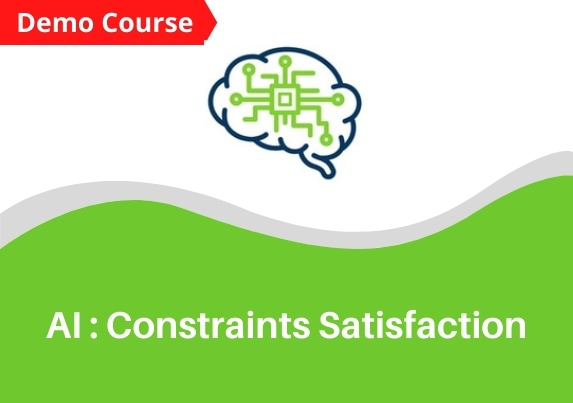About the course
In this course, you will look at general approaches to solving finite domain CSPs and explore how search can be combined with constraint propagation to find solutions. This course is a companion to the course “Artificial Intelligence” that was offered previously.
Learning Outcomes
After completing this course, you will be able to:
- Understand the details of Constraint Satisfaction Problems (CSPs).
- Understand and solve the constraint satisfaction problems without any difficulty.
- Improve and enhance their problem-solving skills in Artificial Intelligence.
- Boost your hireability through innovative and independent learning.
Target Audience
The course can be taken by:
Students: All students who are pursuing professional graduate/post-graduate courses related to computer science and engineering or data science.
Teachers/Faculties: All computer science and engineering teachers/faculties.
Professionals: All working professionals from computer science / IT / Data Science domain.
Why Learn Artificial Intelligence: Constraint Satisfaction?
Artificial Intelligence (AI) has the potential to revolutionize the human civilization and will impact industries, companies and how we live our life. As per the latest study, the global market for Artificial Intelligence is estimated to post an impressive 36.1% CAGR between 2016 and 2024, rising to a valuation of US$3,061.35 billion by the end of 2024 from US$126.14 billion in 2015. The expert system segment was at the forefront of growth in 2015, representing 44% of the overall market revenue and is poised to maintain its dominance until 2024. Thus, the career prospect is bright for the candidates having the knowledge of Artificial Intelligence, as there an only a few professionals in this field and the demand in the industry is huge for this technology. So, it's worth taking this course.
Course Features
- 24X7 Access: You can view lectures as per your own convenience.
- Online lectures: 21 hours of online lectures with high-quality videos.
- Updated Quality content: Content is latest and gets updated regularly to meet the current industry demands.
Test & Evaluation
1. During the program, the participants will have to take all the assignments given to them for better learning.
2. At the end of the program, a final assessment will be conducted.
Certification
1. All successful participants will be provided with a certificate of completion.
2. Students who do not complete the course / leave it midway will not be awarded any certificate.







